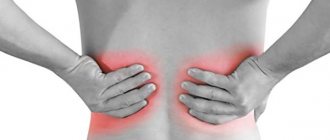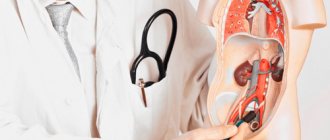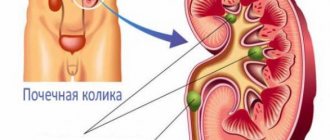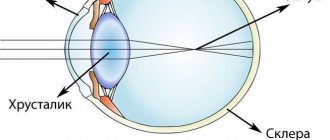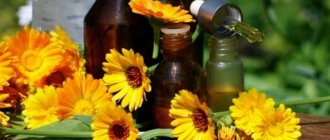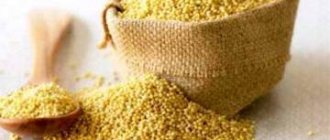Eastern teachings about maintaining health in the body teach us to understand the nature of the processes occurring in our body. In China and India, various techniques are used to influence certain parts of the body in order to influence and change the energy currents in the internal organs. According to one of the meanings, the word “mudra” is translated as “invoking joy.” In our article we will look at the topic of restoring the functions of the urinary system, or at least helping traditional methods of treatment, for example, yoga gestures (mudras). Namely, how Apaan mudra can help against kidney diseases and what other mudras exist that help restore the functioning of these organs.
General information about mudras
Mudras in the Western world mean a system of closing fingers to improve a person's health and general well-being.
Mudras in the Western world mean a system of closing fingers to improve a person's health and general well-being. Although advanced practitioners use this technique to change the flow of energies in the body to achieve certain states, an ordinary person can also use one or another mudra, knowing at the same time what effect it can have on the body.
For reference: Mudras are one of the most powerful methods of influencing oneself, proven over thousands of years, to achieve health and a state of inner peace. Mudras can be practiced anywhere.
The special closing of fingers is based on knowledge about the elements (energies) of the universe of which each person consists. Each of the fingers is responsible for its own element:
- Thumb – Fire element;
- Index finger – element Air;
- Middle finger – element Ether (space);
- Ring finger – Earth element;
- The little finger is the element of Water.
By closing the fingers in certain, sometimes complex, configurations, you can control the energy responsible for the functioning of certain internal organs and systems. If the fingers are closed, then the energy remains in the body; when opened, it is released. Mudras are performed sitting on the heels with closed knees or in the lotus position. The duration of one mudra is from 2 to 5 minutes three times a day, for more advanced practitioners from 15 to 30 minutes during one long practice with visualization, with both hands.
Several mudras are used to help with kidney diseases. The leading one is Gyan Mudra, which is performed for 10 minutes before any other mudra. Next is “Fearlessness Mudra”, “Soaring Lotus”, “Energy Mudra” (Apaan Mudra).
Attention! It is not recommended to change the sequence and ritual of performing mudras.
What are mudras?
According to the canons of ancient Indian medicine, special positions of the fingers and palms used in Buddhist rituals can direct energy to the affected area and improve a person’s overall well-being. To understand the principles of treatment, it is worth understanding the basics of Ayurveda. Each finger of the hand is associated with a certain element, and any point on the phalanges is a projection of the internal organs:
| Finger | Element | Organs |
| Big | Wind | Gallbladder |
| Liver | ||
| Little finger | Water | Bladder |
| Kidneys | ||
| Average | Earth | Spleen |
| Pancreas | ||
| Stomach | ||
| Nameless | Metal | Colon |
| Lungs | ||
| Pointing | Fire | Small intestine |
| Heart |
Mudras do not provide a quick effect in the treatment of diseases of the excretory system. To achieve results, regular finger exercises and self-massage of the lower phalanges of the little fingers are necessary, since they are the projection of the kidneys.
When the fingers are in certain configurations, a person creates a closed energy system that can be used as a tool in the fight against kidney disease. By massaging certain points on the phalanges, you can stimulate the excretory system. Mudras vary in difficulty of execution. Before starting alternative treatment, it is important to familiarize yourself in detail with the professional literature on this issue, and it is better to consult with a qualified specialist.
Recommendations for daily practice
If you are just starting to practice finger yoga, remember that only regular practice produces results.
If you are just starting to practice finger yoga, remember that only regular practice produces results, it is not a method of instant relief (although there are mudras that can relieve e.g. heart attack) and treating this technique as a panacea would be a mistake. Restoring the functioning of any organs requires time and patience.
If you are a person living an ordinary social life, then gestural yoga will be a good assistant for you in complex therapy for kidney diseases. However, if you seriously engage in this practice, lead a healthy lifestyle, eat right, and adhere to positive thinking, you will most likely significantly restore your health, contrary to medical predictions.
Attention! For diseases that require urgent medical or surgical treatment, you must adhere to the recommendations of your doctor. Mudras, at the same time, will help to quickly restore strength after therapy.
For the first few days, practice only Gyan Mudra, which will start the healing process, then you can gradually introduce other hand positions that help with kidney diseases. During classes, focus on your feelings, as if observing from the inside what you feel, add visualization, imagining yourself full of strength and health. As you exhale, imagine how illness and pain leave your body, dissolving like a cloud in space. Let go of illness with ease and with gratitude for the lessons you have learned. Feel the liberation from the disease, which will become more tangible every day.
How to find a kidney recipient and who can become a donor?
Text of the book “Healing Mudras”
Vajra mudra
The next mudra, which, among other important things, will help cope with digestive problems, is vajra mudra (see Fig. 20).
It stimulates blood circulation and increases blood pressure, which usually relieves general weakness and dizziness. All these manifestations are characteristic when there is a weakness in the body of the primary element “earth”. This condition often manifests itself as disturbances in the abdominal organs and spleen. Therefore, the practice of vajra mudra, by stimulating the earth element, also solves problems associated with decreased function of the digestive system. As a treatment, it should be practiced at least 3 times for 5 minutes. Varuna Mudra
Very often, problems arising in the digestive tract are associated with water retention in the body and excessive mucus formation. An example is colitis, many liver diseases (for example, cirrhosis), etc. In such situations, the best choice to improve your condition is the mudra of the water god Varuna. Let me remind you, one of the effects of practicing this mudra is the removal of excess water and unnecessary mucus from the body. It must be performed whenever mucus or excess water appears in the body. Most often, such symptoms are associated with excessive nervousness, internal anxiety, and tension. This can happen due to overload, fatigue, or lack of time.
You are already familiar with the technique of this mudra (see Fig. 30). As a treatment, it is used 3 times a day for 45 minutes. Of course, practicing visualization will help you. Except
In addition, try to put your life in order, not to bring yourself to the point of fatigue and exhaustion, as this is a direct path to illness.
Another important and intractable problem associated with indigestion is constipation and hemorrhoids that develop as a result.
Ksepana-Mudra
–
the mudra of liberation
The action of this mudra primarily consists in liberating the body from “bad”, spent, one might say, spent energy. For many people, life develops in such a way that most of their time they are forced to be surrounded by other people. If you have low energy potential, then you may well take on a large amount of someone else’s negative energy. Practicing kshepan mudra will help you get rid of this flow, making room for new, positive, fresh energy. This mudra also helps to free yourself from any tension and psycho-emotional pressures.
At the physiological level of our body, the use of kshepan mudra stimulates bowel movements and sweating. It also works well on bad breath, cleaning it.
The technique for performing the mudra is as follows: you need to turn your palms towards each other and cross all fingers except the index fingers (they are straightened and their tips touch). The tip of the thumb, located on top, is located in the fossa between the index and thumb of the second hand (Fig. 56). In this position, the hands are turned down, the index fingers point down. If you practice this mudra while lying down, then your index fingers should be turned towards your feet.
Rice. 56. Kshepana mudra
The mudra is performed if necessary for 7-15 breathing cycles, while attention should be concentrated on exhalation. It is advisable to combine exhalation with the visualization process. You can imagine the following picture: you are sitting on a stone in the middle of a stream, practicing mudra, and with each exhalation, sweat flows abundantly from all the pores of your body, and you also exhale a dark cloud, with which everything negative is removed. At the end of this practice, you wash your face with clean water from the stream, finally washing away everything unnecessary. The practice of kshepan mudra in combination with meditation makes room for fresh energy, as well as for everything new in life.
It should be borne in mind that this mudra cannot be performed for a long time, since if you overdo it, you will begin to remove not only the spent energy, but also the fresh energy you need as you exhale.
Linden tea and elderberry decoction help and enhance the effect of mudra.
It is also recommended to actively use the sauna or bathhouse - this will speed up the cleansing processes of your body. Suchi mudra
A mudra that helps to cope with the problem of bowel cleansing (constipation). We have already become acquainted with it (see Fig. 38) - it allows you to change your character and develop some new qualities in yourself. In the starting position, the fists are pressed to the chest. As you inhale, the right hand is moved to the side, at the same time the index finger is extended, and the head turns to the right; with an exhalation, the hand and head return to their place. Then a similar action is performed to the left. This constitutes one cycle. For severe intestinal problems, you need to perform up to 10–12 cycles daily, if necessary, supplementing this practice with mushti mudra,
wise “Fist” (see Fig. 55).
It should be remembered that an overcrowded intestine is always stress for the body, slagging, and the cause of many diseases. Also, problems with the intestines often lead to short temper, aggressiveness, and intolerance.
If necessary, practice all these mudras, supplementing their action with buckthorn decoction.
Excess weight
A very pressing problem today. There are so many jokes on this topic! And how many times have we been upset when looking at ourselves in the mirror... Those methods that are well known and seem to be accessible to everyone (I mean diet and exercise), alas, turn out to be much more difficult than it seems at first glance. In any case, most people's enthusiasm does not last long.
So, know that finger yoga (mudra) can help you here too!
Linga mudra
The first of the mudras that “works” in the described situation. It also has other names - lifting or strengthening mudra (see Fig. 44 and 47). Linga mudra is multifunctional, it has a real effect on colds, pneumonia, runny nose, sinusitis, significantly improves the body's immunity and defenses, and accelerates recovery in many inflammatory processes.
Linga mudra stands out among others because it has the ability to increase body temperature, and this strengthens the immune system. To enhance the effect of the mudra, before performing it, it is recommended to do the “illness, back!” exercise.
Starting position – standing, feet shoulder-width apart. The arms are straightened and placed in front of the chest. As you inhale, your arms are pulled back as far as possible, your shoulder blades are retracted, and your head simultaneously turns left and right. With an exhalation, the arms and head return to their original position. The exercise is performed up to 10 times, after which you can begin to perform the mudra itself.
Personally, I prefer to practice mudras while sitting, in classic meditation poses (my favorite pose is padma sana, the lotus pose (see Fig. 11)). You can choose any convenient option for yourself, you can even practice standing or walking. But, in my opinion, there are a number of advantages to sitting in a sitting position - it is easier to focus on the breathing process and visualization practice.
It is recommended to perform Linga Mudra as a treatment until you feel warm. In order to lose weight, it should be practiced 3 times a day for 15 minutes. As you understand, weight problems cannot be solved in one day; this is a rather lengthy process. When
If you are practicing this mudra for the purpose of weight loss, pay attention to your diet. It is necessary to introduce a large number of “cooling” foods into your diet. These include citrus fruits, bananas, rice, and dairy products. You should also drink at least 8 glasses of water throughout the day. When visualizing, you can imagine fire, a flame that burns everything unnecessary in your body.
But the practice of this mudra cannot be abused.
If you overdo it, you may experience weakness, apathy, and drowsiness. Follow the principle: “The best is the enemy of the good.” Everything must be done in moderation. Surya Mudra
-
mudra of fire
The second mudra that will help you solve problems with excess weight is surya mudra. Its regular practice reduces excess weight (primarily by “burning” fat deposits on the abdomen) and helps in the treatment of diabetes and liver diseases.
Let's consider the technique of performing mudra: the ring finger on both hands is pressed with the first phalanx of the thumb to the palm, the remaining fingers are straightened (Fig. 57). This mudra is best performed in a sitting position, with your hands on your knees and palms facing up. To achieve weight loss, it is recommended to perform mudra for up to 20 minutes a day. Maintain even, calm breathing; you can visualize sunlight or the color golden. You can silently repeat the mantra “Ram”, which resonates with the third chakra (manipura).
To reduce appetite, it is recommended to use short cycles of breathing through the left nostril; this process activates the lunar channel. But such breathing must be handled carefully: if you practice it often, the result will be drowsiness, apathy, and indifference. That is, it is advisable to combine all these practices, but without fanaticism! And if you work a little more on your nutrition, the results will pleasantly surprise you.
Rice. 57. Surya mudra
Immunity
Linga Mudra
This is the main mudra for increasing immunity (see Fig. 44 and 47). It is the main mudra that stimulates the body's defenses, thereby mobilizing the immune system and accelerating recovery. It is necessary to perform this mudra for the purpose of treatment up to 3 times a day for 15 minutes, you can also turn to it if necessary when you feel that you are getting sick. Combine the practice of mudra with meditation aimed at recovery and visualization: you can imagine a fire in your body in which all toxins, bacteria, pain are burned...
In addition, you can take echinacea infusion to stimulate the immune system.
Ushas mudra
It also doesn’t hurt to practice mudras, which serve to increase your strength.
Ushas mudra (mudra of dawn) will be especially suitable for you in this case (see Fig. 12). In addition to the effect of increasing vitality, it will help tidy up your hormonal system. Prana Mudra
The practice of prana mudra, or the mudra of life (see Fig. 15), will help you accumulate vitality and cope with fatigue. In addition, it will give you the strength to withstand adverse circumstances, including illness.
Skin, dermatological problems
Most skin diseases arise and manifest themselves in a state of psycho-emotional overload, fatigue, and nervousness. In general, the cause of such problems can be identified as a lack of energy in the body, primarily in the root chakra (muladhara).
The main mudra that will help you cope with dermatological problems is Prithvi Mudra
(earth mudra) (see Fig. 16).
The action of this mudra primarily stimulates the root chakra, preventing the loss of energy due to nervous stress. Prithvi mudra has a positive effect on the condition of nails, hair, and skin. As a treatment, it should be used for 15 minutes 3 times a day.
Among all other advantages, mudra gives a feeling of self-confidence and increases self-esteem. It’s funny, but it is also indispensable if you are prone to hysterics and psycho-emotional breakdowns, as well as in case of problems with the musculoskeletal system, or more precisely with the skeletal system (osteoporosis, fracture, etc.).
Urinary system
This includes mudras that help with various diseases of the kidneys (pyelonephritis, glomerulonephritis, urolithiasis) and bladder.
Apana mudra
The mudra of energy is one of the main ones for solving the described problems. We got acquainted with it in the section devoted to planning your future life (see Fig. 39).
The main purpose of this mudra is detoxification, removing toxins from the body. It helps with acute poisoning and in case of decreased kidney function (improves the excretion of metabolic products that are removed by the kidneys), and also alleviates hangover syndrome.
Considering that apana mudra activates the “wood” element in our body, which is responsible for the energy of the liver and gallbladder, its practice also stimulates the functions of the liver, which is also directly involved in detoxification processes.
As a treatment, apana mudra should be practiced for up to 45 minutes a day, or in three doses of 15 minutes each.
Bhudi-Mudra
–
liquid mudra
This mudra is absolutely indicated for kidney disease. It helps restore fluid balance in the body. One of its effects is also an improvement in the sense of taste.
The technique for performing the mudra is as follows: on both hands, the tips of the little fingers and thumbs are connected, the remaining fingers are extended, but not tense (Fig. 58).
Rice. 58. Bhudi mudra
As a treatment, you should practice this mudra three times a day for 15 minutes. To achieve additional effects from mudra practice, you need to control the amount of liquid you drink. A person should consume 1.5–2 liters of water per day; the quality of the water is important.
Taking medicinal herbs will also help improve the situation in case of kidney problems: bearberry (bear's ears), lingonberry, half-palm.
Matangi mudra
It is recommended to perform it when kidney function decreases, regardless of the cause (see Fig. 53).
Matangi mudra is aimed at achieving inner harmony and dignity. At the level of our body, it has a beneficial effect on almost all organs of the abdominal cavity, including improving kidney function. Also, let me remind you, this mudra activates breathing and normalizes heart function. As a treatment, it should be performed at least 3 times a day for 4–5 minutes. Makara Mudra
A mudra whose action is specifically aimed at activating the energy of the kidneys. In Hindu mythology, Makara is understood as a sea monster capable of taking on various forms - from a crab to a giant shark.
Every person has energy reserves that are replenished at rest. The main reservoir of energy is the kidneys, and it is replenished in them by performing Makara mudra.
The technique for performing the mudra is as follows: the right hand is located below and clasps the left hand, the thumb of the right hand is between the little finger and ring finger of the left hand, the tip of the thumb of the right hand rests on the base of the thumb of the left hand. On the left hand, the thumb and ring fingers are joined together to form a ring (Fig. 59).
Performing this mudra is indicated for many kidney diseases, especially with reduced function of the urinary system. It is also recommended if you feel tired or lack of strength - as a rule, this means a decrease in energy potential.
If you experience such symptoms, you should resort to the practice of Makara mudra. It must be performed 3 times a day for 10 minutes. Breathing techniques from hatha yoga will be a good help for this practice. You can use alternating or cleansing breathing techniques (kapalabhati). To fully restore energy reserves in the body, you need to rest more, spend time in the fresh air, combining this with moderate physical activity.
The described mudra also gives inner peace, confidence, and a sense of security. The effect of the mudra is enhanced by the visualization of the color blue, which has a positive effect on the element “water”. I am sure that you will not have problems visualizing the color blue - this is the sky, the sea.
Rice.
59. Makara Mudra Fearlessness-Mudra
And the last mudra, which is good for kidney problems. It leads to control over yourself and your emotions, teaches you to cope with fear and depression. In terms of getting rid of physical ailments, this mudra works great for healing the kidneys. On the spiritual level, it symbolizes victory over evil with the help of one’s internal reserves, by increasing inner strength. In Hindu mythology, the effect of the mudra of fearlessness is described as follows: “Fear is inherent not only in man, but in everything in nature. Birds, animals and people, the Sun, the Moon and all the worlds are constantly afraid of attack or collision... You can overcome this by achieving a state called “the world of the Buddha, free from fear.” And it’s true – you can’t get rid of health problems without getting rid of fears.
The technique for performing the mudra is as follows: the right hand is raised to chest level, the palm is turned outward, while the left hand is located at the level of the stomach, palm up (Fig. 60). The position of the right hand means a dismissing gesture. While performing the mudra, breathing is smooth and natural. In terms of visualization, it is best to imagine the color white enveloping you from all sides.
Rice. 60. Mudra of fearlessness
Spine
To solve back problems (meaning overload of the spine, pain of various origins) there is mudra, which acts as an “ambulance”. This is prati mudra
(Prati-Mudra, or Back-Mudra) – mudra for the back. She works in various situations related to spinal problems. After all, the causes of discomfort can be very different: this is the scourge of modern man - osteochondrosis, and diseases of the internal organs, which are reflected in the spine through the nerve pathways, and physical, psychological overload, and “extra” emotions, fears, and unhealthy food... I think , you can add to this list as well as I can.
The principle of treatment is simple - you need to get rid of everything unnecessary (fears, anger), change your lifestyle a little, and, of course, practice mudra. The technique for performing it is as follows: on the left hand you need to connect the pad of the thumb with the nail of the index finger, the other three fingers are straightened. On the right hand, the pads of the thumb, middle finger and little finger are connected together, the remaining fingers are extended forward, but without tension (Fig. 61). As a treatment, you need to perform this mudra for 4 minutes 4 times a day.
Prati mudra copes well with back pain of any origin, especially if you practice it while lying on the floor, with your feet placed on a chair. You should remain in this position for up to 20 minutes.
Limb paresis, Parkinson's disease and other neurological problems
The main mudra that helps alleviate these serious diseases is the wind mudra - vayu mudra
(see Fig. 43). Let me remind you that in addition to its positive effect in cases of severe neurological disorders, it has a good effect on joints, relieving pain from arthritis, cleanses the blood, helps with radiculitis and rheumatism, reducing back pain. And in the case of Parkinson's disease, vayu mudra reduces trembling of the hands, neck, and head.
Rice. 61. Prati mudra
This mudra affects the air element, weakening the distortions caused by the “wind” throughout the body. As a treatment, you need to practice it at least 3 times a day for 15 minutes.
In addition to visualization practice, it is necessary to drink large amounts of green tea and herbal decoctions, which traditional medicine recommends specifically for your disease.
Heart diseases
Heart disease is the number 1 problem today; we can say that it is a disease of modern civilization. This includes coronary heart disease and associated hypertension, angina pectoris, various rhythm disturbances, heart defects caused by rheumatism and other diseases. We provoke some of these illnesses ourselves - with our attitude to life, our unnecessary, often unjustified emotions, overwork, and poor nutrition. Of course, in order to cope with serious illnesses, you must at least change your attitude towards yourself and your lifestyle (remove unnecessary emotions, stop overloading yourself physically and emotionally). And, of course, the practice of mudras will be indispensable for improving your condition and will help you successfully get out of most difficult situations.
The main mudras that will help you cope with many heart diseases, or at least alleviate their course, are as follows.
Ganesha Mudra
A mudra dedicated to the deity who overcomes any difficulties. It stimulates the heart, strengthens the myocardium, and also has a positive effect on the functions of the respiratory system. At the spiritual level, Ganesha mudra strengthens the heart chakra, and accordingly increases courage, openness and self-confidence in a person.
If you have chronic heart diseases, it is enough to perform this mudra once a day, being sure to control your breathing - while exhaling, stretching the finger lock to the sides, while tensing the muscles of the arms and chest, relaxing the muscles while inhaling (see Fig. 29). When performing mudra, try to feel all the sensations. Also, given the connection of Ganesh mudra with the heart (the element “fire”), do not forget about the practice of visualization: imagine the color red, which corresponds to the element “fire” - this will enhance the effect of the mudra. In addition, the color red itself supports the activity of the heart. And don’t forget about the “natural pharmacy” - hawthorn strengthens the heart muscle well.
Gyan mudra
A gesture symbolizing “Knowledge” and the processes of cognition of various levels of being.
A gesture symbolizing “Knowledge” and the processes of cognition of various levels of being. It restores energy metabolism very well, has a positive effect on life processes inside the body: metabolism, blood circulation, etc.
Place your hands on your knees, palms up, arms relaxed. Connect the pads of your thumb and index finger into a ring. A gesture is considered strengthened when the index finger rests with the nail on the second phalanx of the thumb. The remaining fingers (middle, ring and little fingers) are relaxed and straightened. This gesture is often used for meditation.
Vajra mudra
Technique of execution The thumbs are straight and touch the lateral surfaces, the index fingers are also straightened and touch the inner surfaces, the remaining fingers are intertwined.
Effects Mudra bestows the Power of Indra: it concentrates energy in the form of a clot, similar to lightning. As a result, you become more focused when setting goals. This mudra is indicated for those who suffer from cardiovascular pathology, hypertension, circulatory failure and blood supply.
Mudra of Fearlessness
This gesture helps cleanse the body of toxins and other unwanted substances, cleanses the kidneys, and directs vital energy to the genitourinary system, thereby healing it. Gesture of moving away from obstacles.
The right arm is bent at the elbow, the elbow is pointing down. The forearm and palm are raised up, the palm is at chest level and directed forward. The left hand is lowered down, the palm is at the level of the stomach and directed upward in the shape of a “boat” (as if something is standing on it).
Varuna mudra
Technique of execution The little finger of the right hand touches the base of the thumb, which, in turn, is placed on the little finger. The left hand clasps the right hand from below, while the thumb of the left hand, with light pressure, is placed on the thumb of the right.
Effects The main purpose of this mudra is to remove unnecessary mucus and fluid from the body. It has a beneficial effect on the body during inflammation, accompanied by the release of pus or mucus, with a runny nose and liver diseases.
"Floating Lotus"
The primary element of this mudra is pure, illuminated water.
The primary element of this mudra is pure, illuminated water. A gesture of wisdom, youth and prosperity. Therefore, this hand position is very well used in the treatment of the genitourinary system (especially in women).
The lotus is a symbol of rebirth, self-improvement and enlightenment. This pure flower is a symbol of immortality and divinity, originating from the earth, passing through water on its way and opening towards the sun. The lotus pose itself (padmasana) symbolizes fire. Thus, the “Soaring Lotus” combines all these four elements.
Fingers are moved to the side. Cross the ring and little fingers inside the palms (in some sources there is a crossing over the back of the palms).
The science of psychosomatics and its connection with kidney diseases
Other mudras for kidney diseases
There are other gestures to practice that can significantly improve the functioning of not only the kidneys, but the entire body as a whole.
"Palace of Reproduction"
This gesture is the “key” to the Swahistan chakra
This gesture is the “key” to the Swahistan chakra, which is located between the navel and the pubic bone (about 4 fingers below the navel). The Palace of Reproduction gives energy to Svadhisthana and is used for chronic kidney diseases.
Immediately after waking up in the morning, you must first perform Gyan Mudra for 10 minutes. Then proceed to the "Reproduction Palace". To do this, place your right palm on your lower abdomen, with your thumb slightly to the side. Hold your left palm up in a “boat” position, placing your left hand above your right, with your thumb pointed to the side and the other fingers closed. In this case, the side surface of the left palm and the little finger touch the stomach.
"Survival"
This mudra is the “key” to the Muladhara chakra, which is located in the perineum (base of the spinal column). To improve the functioning of the genitourinary system, improve the function of the rectum, spine, and also to eliminate fear, this gesture must be used regularly.
After performing the Gyan Mudra, you can begin the “Survival” gesture. To do this, you need to place the end of the thumb at the base of the ring finger, press the index, middle, ring and little fingers with the pads of the palm, thus forming a fist.
Attention! Any practice is effective only if you do it regularly and believe in success. The most important thing in gesture yoga is to listen carefully to your feelings, visualize healing, and closing the energy channels on your fingers will help with this.
Regularly undergo preventive examinations, follow your doctor’s recommendations, and be attentive to your health. A positive attitude, regular practice and a healthy lifestyle can greatly improve your well-being. Remember, the human body is a self-healing system. Knowing how it works, you can manage your condition yourself, thereby improving the quality of your life.
Brief conclusions
The benefits of mudras for the kidneys depend on faith, correct execution and a positive attitude.
To perform the procedure correctly, you should not forget about moderate breathing. Only with complete relaxation and purification of thoughts can the desired result be achieved. Mudras are able to relieve symptoms of the disease and treat the root cause of kidney pathology, but patients should not forget that finger exercises are an auxiliary measure. In case of diseases of the excretory system, you must first consult a doctor and not self-medicate.

